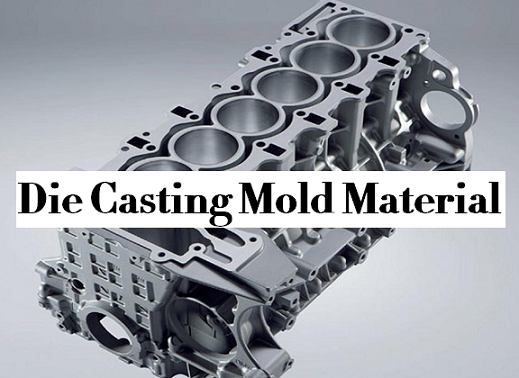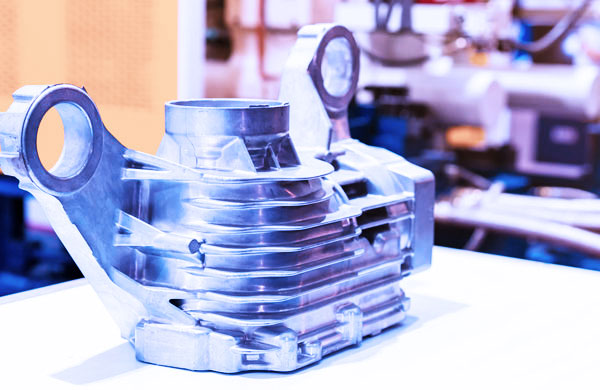The Best Guide To Stahl Specialty Company
The Best Guide To Stahl Specialty Company
Blog Article
Unknown Facts About Stahl Specialty Company
Table of Contents10 Simple Techniques For Stahl Specialty CompanyStahl Specialty Company - The FactsExamine This Report about Stahl Specialty CompanySome Known Questions About Stahl Specialty Company.The smart Trick of Stahl Specialty Company That Nobody is Talking AboutAll About Stahl Specialty Company

If you're creating a metal product, you've likely taken into consideration using aluminum as the base product. Pure aluminum has actually restricted applications, so it is commonly combined with other aspects, such as silicon, magnesium, and manganese to create alloys.
(AA), based in North America, has developed specs that manage aluminum alloys' make-up, homes, and language. There are 2 kinds of light weight aluminum alloys functioned and cast.
Not known Details About Stahl Specialty Company
Cast aluminum alloys are made by thawing pure light weight aluminum and integrating it with other steels while in liquid form. The mix is poured right into a sand, die, or financial investment mold and mildew. After solidification, the metal is removed from its mold. At this stage, it is in either its last type or as a billet or ingot for further handling.

160.0 stands for a cast with a minimum of 99.60% aluminum. The fourth figure, which comes after the decimal factor, specifies if the alloy is a casting (xxx. 0) or an ingot (xxx. 1). Wrought light weight aluminum alloys likewise start by integrating liquified light weight aluminum with other metals. In comparison to cast alloys, nonetheless, they are developed right into their last shape with procedures such as extrusion, rolling, and flexing after the metal has solidified into billets or ingots.
There are many small differences in between wrought and cast light weight aluminum alloys, such as that cast alloys can have more substantial quantities of other metals than wrought alloys. Yet the most remarkable distinction in between these alloys is the fabrication procedure via which they will certainly most likely to provide the last item. Apart from some surface area therapies, cast alloys will certainly leave their mold and mildew in practically the precise solid type wanted, whereas wrought alloys will certainly undertake several alterations while in their solid state.
If you think that a functioned alloy might be the finest for your task, have a look at several of our write-ups that explain even more concerning specific wrought alloys, such as Alloy 6061 and Alloy 6063. On the various other hand, if you think a cast alloy would be better for you, you can find out more about some actors alloys in our Alloy 380 and Alloy 383 short articles (coming quickly).
The Ultimate Guide To Stahl Specialty Company
When selecting an aluminum factory for your production needs, it's critical to study several aspects. Among the most important elements to take into consideration is the experience and skills of the factory. Foundry. Selecting a factory that has the ideal understanding of the aluminum casting procedure, and the portfolio to reveal for it, assists to have an effective outcome for your task
Having the experience and market expertise to engineer your spreadings for optimum production and top quality outcomes will certainly improve the project. Producing light weight aluminum spreading needs a complicated collection of procedures to accomplish the appropriate outcomes. When choosing a new light weight aluminum shop to partner with, ensure they have substantial market experience and are well-informed about all aspects of the light weight aluminum casting procedure: layout, production, product evaluation, and product testing.
The shop should also have a tried and tested record of supplying remarkable products that fulfill or go beyond client expectations. Quality control should additionally be at the top of your checklist when picking an aluminum factory. By dealing with a qualified shop who adheres to the criteria for quality assurance, you can secure the honesty of your item and ensure it fulfills your specs.
By selecting a firm that supplies solutions that fulfill or surpass your product requirements, you can be sure that your job will certainly be finished with the utmost accuracy and effectiveness. Different components need different manufacturing techniques to cast light weight aluminum, such as sand spreading or die casting.
The Buzz on Stahl Specialty Company
Die spreading is the name offered to the procedure of developing complex metal parts with use mold and mildews of the element, additionally referred to as dies. The process uses non-ferrous steels which do not have iron, such as light weight aluminum, zinc and magnesium, as a result of the desirable buildings of the steels such as low weight, greater conductivity, non-magnetic conductivity and resistance to rust.
Pass away spreading production is fast, making high manufacturing degrees of components easy. It creates even more components than any type of other process, with a high degree of accuracy and repeatability. To learn more concerning die spreading and pass away casting products used while doing so, continued reading. There are 3 sub-processes that drop under the classification of die casting: gravity die spreading (or permanent mold and mildew casting), low-pressure die casting and high-pressure die spreading.
After the purity of the alloy is evaluated, dies are produced. To prepare the passes away for spreading, it is essential that the dies are clean, so that no residue from previous productions stay.
How Stahl Specialty Company can Save You Time, Stress, and Money.
The pure steel, also referred to as ingot, is contributed to the furnace and kept at the molten temperature level of the metal, which is after that moved to the injection chamber and injected right into the die. The stress is after that maintained as the steel strengthens. As soon as the metal strengthens, the cooling procedure starts.
(https://www.figma.com/design/5dtta9biYAvurKhKjAAp7p/Untitled?node-id=0-1&t=AoovjzyjwBUdKG93-1)
The thicker the wall surface of the component, the longer the cooling time due to the fact that of the quantity of interior metal that also needs to cool down. After the element is totally cooled down, the die halves open and an ejection mechanism pushes the component out. Adhering to the ejection, the die is shut for the following injection cycle.
The flash is the added material that is cast during the process. This should be go to the website trimmed off using a trim device to leave just the major part. Deburring removes the smaller items, called burrs, after the trimming process. Ultimately, the element is polished, or burnished, to offer it a smooth surface.
Stahl Specialty Company Fundamentals Explained

Zinc is one of the most previously owned alloys for die casting due to its lower cost of raw products. Its corrosion resistance additionally enables the components to be long long-term, and it is one of the a lot more castable alloys due to its lower melting point.
As mentioned, this alloy is among one of the most commonly used, yet manufactures will, at times, choose aluminum over zinc because of light weight aluminum's manufacturing advantages. Light weight aluminum is extremely cost-effective and one of the more versatile alloys. Aluminum is made use of for a variety of different products and markets anything from home window structures to aerospace materials.
Report this page